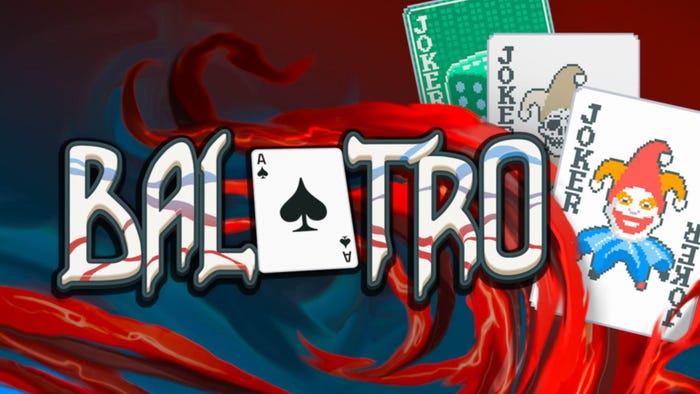Analysis: Soren Johnson On Playing The Odds
Former lead designer on Firaxis' Civilization IV Soren Johnson examines the role of luck in games, which he describes as "a social lubricant – the alcohol of gaming, so to speak."

[In a column originally published in Game Developer magazine, former lead designer on Firaxis' Civilization IV and current EA 2D staffer Soren Johnson examines the role of luck in games, which he describes as "a social lubricant – the alcohol of gaming, so to speak."] One of the most powerful tools a designer can use when developing games is probability, using random chance to determine the outcome of player actions or to build the environment in which play occurs. The use of luck, however, is not without its pitfalls, and designers should be aware of the trade-offs involved – what chance can add to the experience and when it can be counterproductive. Failing at Probability One challenge with using randomness is that humans are notoriously poor at accurately evaluating probability. A common example is the Gambler’s Fallacy, which is the belief that odds will even out over time. If the Roulette wheel comes up black five times in a row, players often believe that the odds of coming up black again are quite small, even though clearly the streak makes no difference whatsoever. Conversely, people also see streaks where none actually exist – the shooter with a ‘hot hand’ in basketball, for example, is a myth. Studies show that, if anything, a successful shot actually predicts a subsequent miss. Also, as designers of slot machines and MMO’s are quite aware, setting odds unevenly between each progressive reward level makes players think that the game is more generous than it really is. One commercial slot machine had its payout odds published by www.wizardofodds.com in 2008: * 1:1 per 8 plays * 2:1 per 600 plays * 5:1 per 33 plays * 20:1 per 2,320 plays * 80:1 per 219 plays * 150:1 per 6,241 plays The 80:1 payoff is common enough to give players the thrill of beating the odds for a a big win but still rare enough that the casino is in no risk of losing money. Furthermore, humans have a hard time estimating extreme odds – a 1% chance is anticipated too often and 99% odds are considered to be as safe as 100%. Leveling the Field These difficulties in accurately estimating odds actually work in the favor of the game designer. Simple game design systems, such as the dice-based resource generation system in Settlers of Catan, can be tantalizingly difficult to master with a dash of probability. In fact, luck makes a game more accessible because it shrinks the gap – whether in perception or in reality – between experts and novices. In a game with a strong luck element, beginners believe that, no matter what, they have a chance to win. Few people would be willing to play a chess Grandmaster, but playing a backgammon expert is much more appealing – a few lucky throws can give anyone a chance. In the words of designer Dani Bunten, "Although most players hate the idea of random events that will destroy their nice safe predictable strategies, nothing keeps a game alive like a wrench in the works. Do not allow players to decide this issue. They don’t know it but we’re offering them an excuse for when they lose ('It was that damn random event that did me in!') and an opportunity to ‘beat the odds’ when they win.” Thus, luck serves as a social lubricant – the alcohol of gaming, so to speak – that increases the appeal of multiplayer gaming to audiences which would not normally be suited for cutthroat head-to-head competition. Where Luck Fails Nonetheless, randomness is not appropriate for all situations or even all games. The "nasty surprise" mechanic is never a good idea. If a crate provides ammo and other bonuses when opened but explodes 1% of the time, the player has no chance to learn the probabilities in a safe manner. If the explosion occurs early enough, the player will immediately stop opening crates. If it happens much later, the player will feel unprepared and cheated. Also, when randomness becomes just noise, the luck simply detracts from the player’s understanding of the game. If a die roll is made every time a StarCraft Marine shoots at a target, the rate of fire will simply appear uneven. Over time, the effect of luck on the game’s outcome will be negligible, but the player will have a harder time grasping how strong a Marine’s attack actually is with all the extra random noise. Further, luck can slow down a game unnecessarily. The board games History of the World and Small World have a very similar conquest mechanic, except that the former uses dice and the latter does not (until the final attack). Making a die roll with each attack causes a History of the World turn to last at least three or four times as long as a turn in Small World. The reason is not just the logistical issues of rolling so many dice – knowing that the results of one’s decisions are completely predictable allows one to plan out all the steps at once without worrying about contingencies. Often, handling contingencies are a core part of the game design, but game speed is an important factor too, so designers should be sure that the trade-off is worthwhile. Finally, luck is very inappropriate for calculations to determine victory. Unlucky rolls feel the fairest the longer players are given to react to them before the game’s end. Thus, the earlier luck plays a role, the better for the perception of game balance. Many classic card games – pinochle, bridge, hearts – follow a standard model of an initial random distribution of cards that establishes the game’s ‘terrain’ followed by a luck-free series of tricks which determines the winners and losers. Probability is Content Indeed, the idea that randomness can provide an initial challenge to be overcome plays an important role in many classic games, from simple games like Minesweeper to deeper ones like NetHack and Age of Empires. At their core, solitaire and Diablo are not so different – both present a randomly-generated environment that the player needs to navigate intelligently for success. An interesting recent use of randomness was Spelunky, which is indie developer Derek Yu’s combination of the random level generation of NetHack with the game mechanics of 2D platformers like Lode Runner. The addictiveness of the game comes from the unlimited number of new caverns to explore, but frustration can emerge from the wild difficulty of certain, unplanned combinations of monsters and tunnels. In fact, pure randomness can be an untamed beast, creating game dynamics that throw an otherwise solid design out of balance. For example, Civilization 3 introduced the concept of strategic resources which were required to construct certain units – Chariots need Horses, Tanks need Oil, and so on. These resources were sprinkled randomly across the world, which inevitably led to large continents with only one cluster of Iron controlled by a single AI opponent. Complaints of being unable to field armies for lack of resources were common among the community. For Civilization IV, the problem was solved by adding a minimum amount of space between certain important resources, so that two sources of Iron could never be within seven tiles of each other. The result was a still unpredictable arrangement of resources around the globe but without the clustering that could doom an unfortunate player. On the other hand, the game actively encouraged clustering for less important luxury resources – Incense, Gems, Spices – to promote interesting trade dynamics. Showing the Odds Ultimately, when considering the role of probability, designers need to ask themselves "how is luck helping or hurting the game?" Is randomness keeping the players pleasantly off-balance so that they can’t solve the game trivially? Or is it making the experience frustratingly unpredictable so that players are not invested in their decisions? One factor which helps ensure the former is making the probability as explicit as possible. The strategy game Armageddon Empires based combat on a few simple die rolls and then showed the dice directly on-screen. Allowing the players to peer into the game’s calculations increases their comfort level with the mechanics, which makes chance a tool for the player instead of a mystery. Similarly, with Civilization IV, we introduced a help mode which showed the exact probability of success in combat, which drastically increased player satisfaction with the underlying mechanics. Because humans have such a hard time estimating probability accurately, helping them make a smart decision can improve the experience immensely. Some deck-building card games, such as Magic: The Gathering or Dominion, put probability in the foreground by centering the game experience on the likelihood of drawing cards in the player’s carefully constructed deck. These games are won by players who understand the proper ratio of rares to commons, knowing that each card will be drawn exactly once each time through the deck. This concept can be extended to other games of chance by providing, for example, a virtual “deck of dice” that ensures the distribution of die rolls is exactly even. Another interesting – and perhaps underused – idea from the distant past of gaming history is the “Element of Chance” game option from the turn-based strategy game Lords of Conquest. The three options available – Low, Medium, and High – determined whether luck was only used to break ties or to play a larger role in resolving combat. The appropriate role of chance in a game is ultimately a subjective question, and giving players the ability to adjust the knobs themselves can open up the game to a larger audience with a greater variety of tastes.
About the Author(s)
You May Also Like












